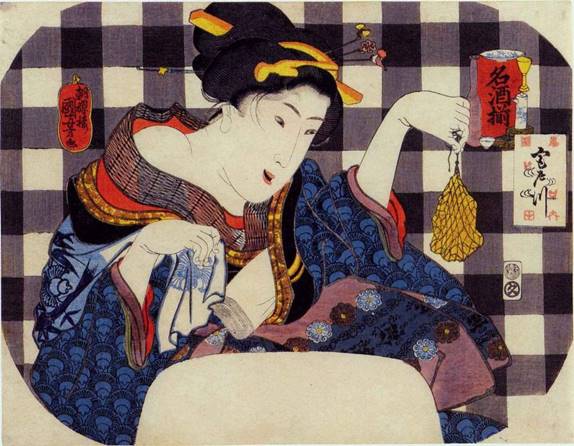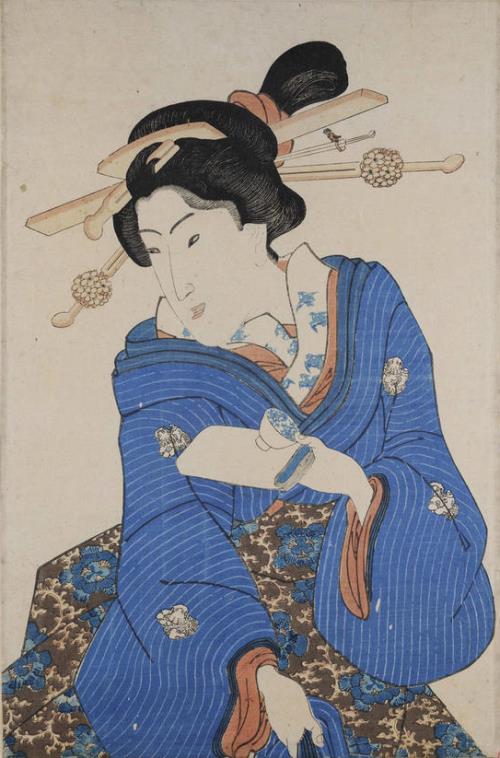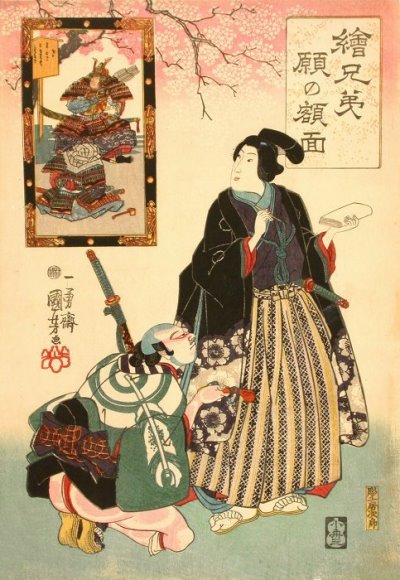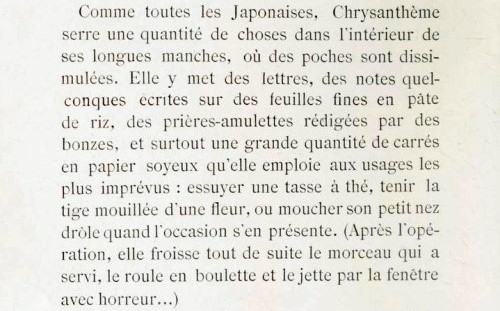| The Public Paperfolding History Project
x |
|||||||
| Kaishi | |||||||
Kaishi is a thin, strong Japanese tissue paper, sheets of which were commonly carried, in a folded pack, in the front, or sleeves, of the kimono, and used for a multiplicity of purposes, possibly including paperfolding. This page is being used to collect information about this practice but should not be taken as being at all authoritative on the subject. If anyone knows more about the uses to which kaishi was put, particularly in regard to paperfolding, I would love to hear from you. ********** 1821 This print by Keisen Eisai, which is said to date from c1821, shows the courtesan Hanazono of the Miu-rayan with kaishi.
********** c1843-1840. A wadge of what appears to be kaishi can be seen appearing from the folds of a kimono in this print by Utagawa Kuniyoshi, said to date from c1843-1840.
********** 1842 to 1851 This print by Utagawa Kunisada showsa geisha with kaishi.
********** 1846 This print by Utagawa Kuniyoshi, which is said to date from 1846, shows a samurai holding a wadge of kaishi.
********** 1887 In 'Madame Chrysantheme' by Pierre Loti, which was published in Paris in 1887, and is the faux diary of a fictional naval officer who falls in love with and marries a Japanese woman, there are several references to the practice of carrying squares of silky paper kaishi in the front folds or the sleeves of the kimono.
Roughly, this reads: 'Like all Japanese ladies, Chrysantheme squeezes a number of things into the inside of her long sleeves, where pockets are concealed. She puts there letters, some notes ... and above all a large quantity of squares of silky paper that she uses for the most unexpected purposes; wiping a teacup, holding the wet stem of a flower, or blowing her funny little nose when the opportunity arises ...' ********** |
|||||||




